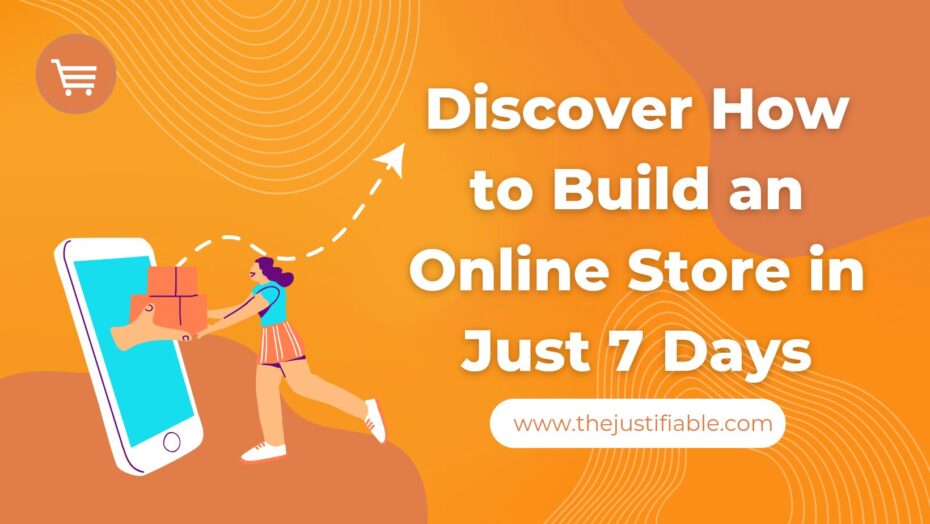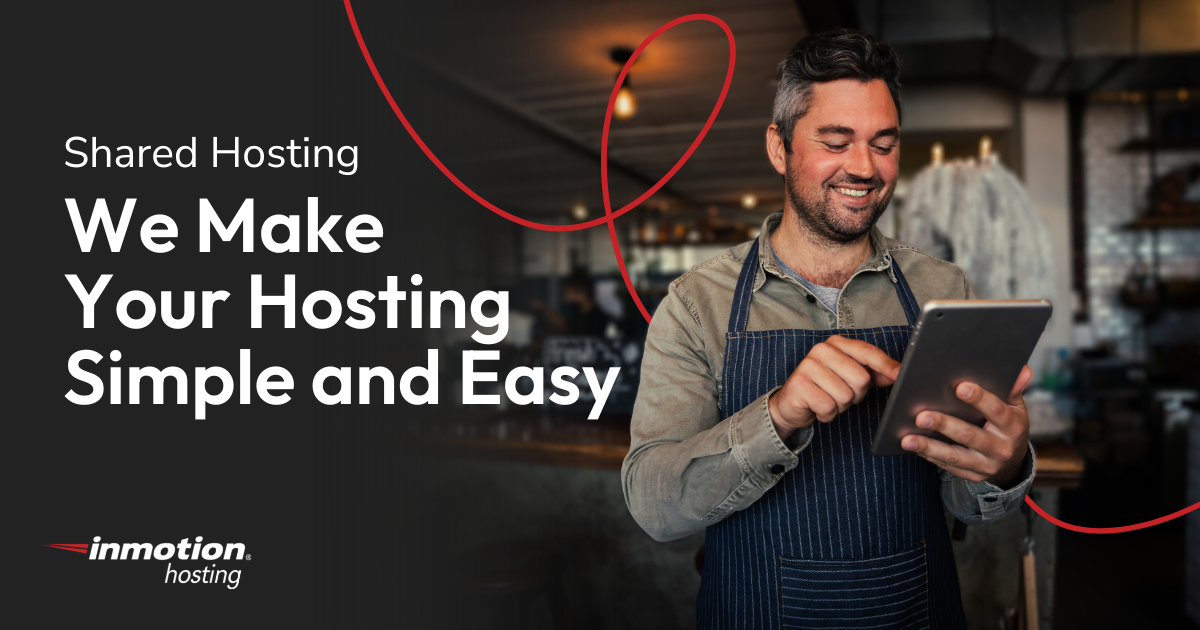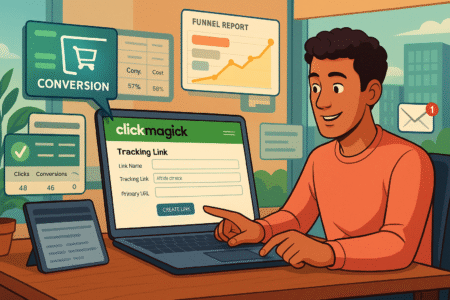Table of Contents
Whether you’re an established brand or an aspiring entrepreneur, transitioning or establishing your presence online can tap into a broader audience and drive exponential sales growth. While the idea of establishing an online shop might seem daunting, you’d be surprised at how approachable it can be. Believe it or not, you can build an online store in just seven days, laying the foundation for a thriving e-commerce business.
The rise of e-commerce platforms and tools has streamlined the process, making it accessible for even those without a tech background. Not only do these platforms offer customizable templates and user-friendly interfaces, but they also equip businesses with valuable resources and support to ensure their success.
If you’ve been hesitant or unsure about where to start, this guide is your roadmap. Over the next sections, we will delve into the step-by-step process, ensuring you’re equipped with the knowledge and insights needed to launch your store confidently.
The Pre-requisites to Build an Online Store
Before diving headfirst into the world of e-commerce, it’s crucial to set a firm foundation. The process to build an online store doesn’t just begin with selecting a platform or designing a layout; it starts with an in-depth understanding of your market landscape and a clear definition of what you intend to offer.
Just as a brick-and-mortar store wouldn’t open without a proper location and inventory, an online store also requires careful planning and strategy. Let’s explore the primary pre-requisites.
Understanding your niche and target audience
In the vast digital marketplace, carving out a unique space is paramount. This begins with understanding your niche. Are you selling handmade crafts, tech gadgets, or perhaps offering a consultancy service?
Recognizing where you fit within the broader market landscape helps define your unique selling proposition (USP). This is the special element that sets you apart from competitors and resonates with your ideal customers.
Once you’ve pinned down your niche, the next step is to understand your target audience. These are the individuals most likely to be interested in your products or services. Consider factors like their demographics, purchasing behaviors, interests, and challenges.
By gaining a deep insight into who they are, you can tailor your online store’s messaging, design, and product offerings to align closely with their preferences and needs.
Deciding on a product or service to sell
Your product or service is the heart of your online store. Whether it’s a tangible product, a digital download, or a professional service, it’s essential to provide value and meet a specific need or desire in the market.
Consider factors like market demand, profitability, and your own passion or expertise in the area. Remember, the best products or services often address a specific problem or fulfill a gap in the market.
Furthermore, you’ll need to consider logistics. If you’re selling a physical product, think about sourcing, storage, and shipping. For services or digital products, contemplate the delivery method and any potential barriers to seamless customer access. Ensuring that what you offer is not only valuable but also deliverable, is vital for long-term success.
Researching and securing a memorable domain name
Your domain name is more than just a web address; it’s the first impression of your brand and an essential tool for online discoverability. Choosing a domain name that’s both memorable and relevant to your business can significantly impact your store’s visibility and credibility. It should be concise, easy to spell, and resonate with your brand identity.
Once you’ve brainstormed potential names, it’s essential to research their availability. You don’t want to infringe on any trademarks or choose a domain too similar to another brand.
Tools like domain name checkers can be invaluable in this process, letting you quickly see if your preferred domain is available. Once you’ve settled on the perfect domain, securing it promptly ensures you have the ideal web address to represent your online store.
Let’s delve into the step-by-step process.
Day 1: Setting Up the Foundation
Embarking on the journey to build an online store is both exhilarating and challenging. On the first day, much like constructing a building, it’s about laying the foundational elements. This foundation will influence not only the functionality and aesthetics of your store but also its performance and security.
The more robust your foundation, the better positioned you’ll be to handle the dynamic challenges and opportunities that come with online entrepreneurship.
Selecting the right e-commerce platform
The first, and arguably one of the most critical decisions you’ll make, is choosing the right e-commerce platform. This platform will be the backbone of your online store, providing the tools and interfaces to manage products, process orders, and interact with customers.
There’s a diverse range of e-commerce platforms available today, from user-friendly solutions like Shopify and BigCommerce to more intricate platforms like Magento.
To make an informed decision, consider factors like your technical expertise, the size of your inventory, your budget, and the specific features you might need. For instance, a small boutique store might prefer a straightforward, no-fuss platform, while a large enterprise might need a platform that can handle complex inventory systems and integrate with other software.
Your choice here is pivotal, as the platform will greatly influence the user experience and operational ease as you build an online store.
Registering the domain and hosting
Having deliberated on and decided your domain name in the pre-requisites stage, it’s now time to formally register it. This ensures that your chosen domain name belongs to you, making it your store’s exclusive address on the internet. There are various registrars like GoDaddy, Namecheap, or Hostgator where you can secure your domain.
Following domain registration, the next step is choosing a hosting provider. Think of hosting as renting space on the internet where your online store’s data will reside. Your hosting choice can affect your store’s speed, uptime, and overall performance.
It’s vital to select a hosting provider known for reliability and excellent customer support. Some e-commerce platforms offer integrated hosting solutions, while others might require you to procure hosting separately.
Installing SSL for security
In the realm of e-commerce, trust is a priceless commodity. Customers need assurance that their data, especially sensitive information like credit card details, is safeguarded. This is where SSL (Secure Sockets Layer) comes in. By installing an SSL certificate, you’re encrypting the connection between your online store and your customers, ensuring data transmitted is secure.
When visitors see the little padlock icon next to your web address, or notice the ‘https’ in your URL, it instills confidence in your platform’s security measures. Many hosting providers offer SSL certificates as part of their packages, but if not, it’s crucial to source and install one from a trusted provider.
Day 1 in your quest to build an online store revolves around establishing a robust foundation. By selecting an apt e-commerce platform, securing your domain and hosting, and ensuring your site’s security with SSL, you’re laying down pillars that will support and elevate every subsequent step in your e-commerce journey.
Day 2: Designing Your Storefront
After laying the foundation on the first day, it’s time to dive into one of the most exciting phases as you build an online store: designing the storefront. This is the face of your e-commerce venture, the first thing customers will see and interact with.
A well-designed storefront not only appeals aesthetically but also ensures a smooth and efficient shopping experience for your visitors. Let’s delve into the key elements of this design journey.
Choosing a mobile-responsive theme
In today’s fast-paced digital world, a significant portion of online shopping occurs on mobile devices. As you build an online store, it’s imperative to ensure that your site looks and functions seamlessly, not just on desktops but also on tablets and smartphones.
Enter mobile-responsive themes. These are designs that automatically adjust and adapt to the screen size on which they’re viewed, ensuring a consistent user experience.
Selecting a mobile-responsive theme is more than just a design choice; it’s about accessibility and user convenience. A mobile-optimized site ensures that images load correctly, text is readable without zooming, and navigation is fingertip-friendly. Additionally, search engines like Google prioritize mobile-responsive sites in search rankings, making this choice crucial for visibility.
Customizing the design to align with your brand
While most e-commerce platforms offer a plethora of themes, the key is to choose one that you can customize to reflect your brand’s identity. Your online store should be an extension of your brand, mirroring its colors, fonts, and overall vibe. Customization goes beyond just aesthetics; it’s about creating a unique environment where customers instantly recognize and connect with your brand ethos.
Start with the basics: integrate your brand logo, decide on a consistent color palette, and select fonts that mirror your brand’s voice. Whether you’re elegant and sophisticated or fun and quirky, your design choices should communicate that. Remember, in the vast digital marketplace, your unique brand identity will set you apart and create memorable impressions on your visitors.
Setting up the main navigation menu
The main navigation menu is akin to a store directory. It guides your visitors, helping them find products or information swiftly. A well-organized navigation menu is essential for user experience, ensuring that visitors can easily browse through product categories, access important information, or reach out for support.
Consider the hierarchy of your products and services. The most sought-after or essential categories should be easily accessible, typically at the top or in the header. Intuitive naming is vital; keep it simple and avoid jargon. If you have a wide range of products, consider integrating a search bar as part of your navigation, aiding customers in quickly locating their desired items.
Remember that designing your storefront is a blend of art and strategy. As you build an online store, this phase is your opportunity to create a digital space that is both visually appealing and functionally robust, paving the way for a delightful and seamless shopping experience for all visitors.
Day 3: Product Integration
On the third day of our journey to build an online store, the focus shifts from the aesthetics of the storefront to its very essence: the products or services you offer. This stage is all about presenting your offerings in the best possible light, ensuring that they captivate visitors and provide all the necessary information for informed purchasing decisions.
Proper product integration is both an art and a science, combining attractive visuals with detailed descriptions and efficient management.
Listing your products or services
The heart and soul of your online store lie in the products or services you offer. Listing them properly is paramount. This isn’t merely about adding products to the platform; it’s about categorizing them logically, ensuring each product lands in its appropriate section or collection. Every product or service should have a dedicated page, where potential customers can delve into its specifics.
For services, outline the scope of what you’re offering. If it’s a consultation service, specify what the session includes, its duration, and any follow-ups or materials provided. For products, highlight the key features, materials used, dimensions, or any other relevant specifications. The aim is to give potential buyers a clear picture of what they’re purchasing, reducing uncertainties and building trust.
Optimizing product images and descriptions
A picture is worth a thousand words, especially in e-commerce. High-quality, clear images are essential when you build an online store. Customers can’t physically touch or try your products, so images become their primary interaction.
Ensure your product photos are well-lit, clear, and taken from various angles to provide a comprehensive view. If possible, include images that showcase the product in use, giving customers a tangible sense of its functionality or appearance.
But visuals, while compelling, need the support of well-crafted descriptions. Your product descriptions should be engaging, informative, and SEO-optimized. This isn’t just about listing features; it’s about narrating a story, emphasizing benefits, and answering potential questions a customer might have.
Integrating relevant keywords naturally within these descriptions can also enhance search engine visibility, driving more organic traffic to your store.
Setting up pricing and inventory management
Once the products are listed and optimized, the next crucial step is to decide on pricing. This requires market research, understanding your costs, and recognizing the perceived value of your product. While competitive pricing can attract customers, it’s essential to ensure that the price set covers costs and ensures profitability.
Alongside pricing, inventory management is crucial, especially if you’re dealing with physical products. Efficient inventory management ensures you don’t overpromise and underdeliver.
Modern e-commerce platforms often have integrated inventory management tools, alerting you when stock levels are low and helping prevent overselling. It’s essential to keep this system updated, ensuring a seamless buying experience for customers and efficient stock management on your end.
Integrating products into your online store is about more than just uploads. It’s a meticulous process of presentation, optimization, and management. As customers browse your store, the clarity, appeal, and information richness of your product listings play a pivotal role in their purchasing decisions.
As you build an online store, remember that every product or service listing is an opportunity to resonate, engage, and convert a visitor into a loyal customer.
Day 4: Setting Up Essential E-commerce Features
On Day 4, as you continue to build an online store, we delve into the heart of e-commerce operations. The design and products are in place, but to transform your site from a digital showcase into a functioning store, we need to integrate essential e-commerce features.
These elements, while often working behind the scenes, are pivotal for ensuring a smooth shopping experience for your customers and efficient transaction processing for you.
Implementing shopping cart functionality
At the core of any e-commerce venture is the shopping cart. It serves as a virtual basket, allowing customers to gather their desired products and proceed to purchase when they’re ready. When you build an online store, ensuring an intuitive and user-friendly shopping cart experience is paramount.
The cart should allow customers to easily add or remove products, view a summary of their selections, see the total cost, and ideally, provide a forecast of additional charges like shipping or tax.
Beyond functionality, it’s equally essential to ensure security. Since the cart handles customer data and transaction details, integrating security measures is non-negotiable. Moreover, a straightforward checkout process with minimal steps can reduce cart abandonment rates, increasing your store’s conversion potential.
Integrating payment gateways
Once products are in the cart, the next step for customers is payment. As such, integrating reliable and secure payment gateways is a cornerstone in the journey to build an online store. These gateways act as intermediaries, processing transaction details securely and ensuring funds get transferred from the customer’s account to yours.
It’s vital to offer a range of payment options, from credit and debit cards to digital wallets and bank transfers, catering to your target audience’s preferences. However, with flexibility comes responsibility.
Every payment method integrated should adhere to security standards, ensuring data encryption and fraud prevention. It’s also wise to select payment gateways known for quick processing and low transaction fees to enhance both customer experience and your profitability.
Setting up shipping options and tax calculations
After a successful payment, the next customer concern is typically, “When will I get my product?” Efficient and transparent shipping options are thus vital. Depending on your business scale and reach, you might offer local, national, or international shipping. Some stores provide free shipping as an incentive, while others may charge based on weight, volume, or distance.
As you integrate these options, clarity is key. Customers should be able to easily find shipping rates, estimated delivery times, and any terms and conditions attached.
In parallel, tax calculations can’t be overlooked. Depending on your region and where you’re shipping to, different tax rates might apply. Accurate and automated tax calculations ensure compliance and prevent unexpected costs for both you and the customer. Most advanced e-commerce platforms offer plugins or tools that handle tax calculations based on the latest regulations, ensuring accuracy and peace of mind.
Remember that these e-commerce features, while technical, play a critical role in the buying journey. They bridge the gap between interest and purchase, ensuring that customers not only find what they want but can also buy it with ease and confidence. As you build an online store, these elements work collectively to form the backbone of your business operations, setting the stage for growth and success.
Day 5: Boosting User Experience
Day 5 in our mission to build an online store brings us to a pivotal aspect that can make or break your e-commerce venture: user experience (UX). Beyond the products you offer, the user’s journey from landing on your site to making a purchase significantly impacts their likelihood to convert, return, and even recommend your store to others.
As we focus on enhancing the UX, we’re not merely improving website functionality; we’re cultivating trust, satisfaction, and loyalty among our visitors.
Enhancing site speed and performance
One of the quickest ways to lose a potential customer is through a sluggish website. In our digital age, speed is paramount. As users navigate your online store, they expect quick load times, be it the homepage, product pages, or the checkout section. Delays, even if just a few seconds, can lead to impatience, mistrust, and eventual abandonment.
Enhancing site speed begins with optimizing the back-end infrastructure. This includes choosing a robust hosting solution, minimizing code bloat, and reducing server response times.
On the front-end, consider compressing images, utilizing browser caching, and leveraging content distribution networks (CDNs). As you build an online store, always monitor site speed, ensuring consistent and swift performance across various devices and regions.
Integrating product search and filters
An integral part of the shopping experience is the ability to swiftly locate desired products. Particularly for stores with vast inventories, a functional and efficient search bar becomes invaluable.
It’s not just about searching; it’s about relevance. Implementing algorithms that display the most pertinent results based on user queries can significantly enhance the shopping experience.
Beyond a search bar, filters play a crucial role, especially when customers have a vague idea of what they want. By allowing users to filter products based on categories, price ranges, brands, sizes, or other relevant criteria, you empower them to navigate your inventory effortlessly, finding products that fit their needs and preferences.
Offering user reviews and ratings
In our interconnected world, peer reviews hold immense power. When customers contemplate a purchase, especially from a new or unfamiliar store, they often seek validation through reviews and ratings from fellow shoppers.
By integrating a system where users can leave feedback, rate products, and share their experiences, you not only enhance transparency but also build trust.
Moreover, these reviews serve as invaluable insights for you as you build an online store. Positive feedback can be leveraged in marketing efforts, while constructive criticism can guide product improvements or service enhancements.
Encourage users to share their experiences, perhaps through incentives or loyalty points, cultivating a community where feedback is valued and acted upon.
Day 6: Implementing Marketing Tools
As we approach the culmination of our week-long journey to build an online store, Day 6 introduces a dimension essential for growth and visibility: marketing. Having a beautifully designed, user-friendly store filled with captivating products is only half the battle.
Now, we must focus on driving traffic to the store and fostering lasting relationships with customers. This day is all about equipping your online store with tools and strategies to amplify its presence, engage visitors, and catalyze conversions.
SEO optimization for your online store
In the vast landscape of the internet, standing out organically is both a challenge and a necessity. This is where Search Engine Optimization (SEO) comes into play. SEO is the art and science of enhancing your online store to improve its visibility on search engines like Google, ensuring that when potential customers search for products you offer, your store is among the top results.
SEO optimization involves various elements. Keyword research identifies phrases and terms your target audience uses, guiding content creation on product pages, descriptions, and even blog posts. Meta tags, URL structures, and alt texts are meticulously crafted to resonate with these keywords and search engine algorithms.
Furthermore, linking strategies, both internal (between your store’s pages) and external (backlinks from other reputable sites), can significantly bolster your online store’s search engine credibility. Remember, as you build an online store, consistent monitoring and updates are pivotal to staying ahead in the ever-evolving realm of SEO.
Installing email marketing integrations
Email remains one of the most effective digital marketing channels, offering a direct line to your customers. By integrating email marketing tools into your online store, you create avenues for engagement, promotions, and long-term relationship building.
Whether it’s welcoming new subscribers, updating them on sales, or simply sharing valuable content, emails can drive traffic, boost loyalty, and catalyze purchases.
To harness the full potential of email marketing, consider tools that allow segmentation of your subscriber list, enabling targeted campaigns based on user behavior, preferences, or purchase history.
Automation features can also be invaluable, sending timely messages triggered by specific user actions, like cart abandonment or browsing patterns. As you build an online store, remember that email isn’t just a promotional tool; it’s a bridge to foster genuine connections with your audience.
Setting up retargeting and tracking pixels
While attracting new visitors to your store is crucial, re-engaging those who’ve visited before can be equally, if not more, rewarding. Retargeting campaigns, powered by tracking pixels, allow you to display tailored ads to users who’ve previously interacted with your online store, reminding them of products they viewed, added to carts, or might be interested in.
These pixels, tiny pieces of code integrated into your site, gather user data and behaviors, feeding them into platforms like Facebook or Google Ads. This information becomes the backbone of retargeting campaigns, allowing you to showcase specific products or offers to a warm audience, increasing the likelihood of conversions.
Additionally, these pixels provide invaluable insights into user journeys, helping refine marketing strategies and improve ROI as you continue to build an online store.
The emphasis is clear: while building an online store is about crafting a digital space for your products, ensuring its success demands proactive marketing efforts. By integrating SEO practices, email strategies, and retargeting tools, you not only attract potential customers but also nurture relationships, transforming one-time visitors into loyal patrons.
Day 7: Testing and Launch
The final day in our journey to build an online store is upon us. However, before we throw open the digital doors and invite the world in, we must ensure everything functions as intended and promises a seamless experience for every visitor.
This day is about refining, gathering insights, and making that crucial leap from a development environment to the live web. It’s a day of anticipation, excitement, and, most importantly, meticulous final checks.
Conducting thorough site testing
While the enthusiasm to go live is palpable, the foundation of any successful online store is its functionality. Every aspect, from product searches to payment processing, needs to be tested rigorously. Start by simulating the user’s journey.
Begin on the landing page, navigate through various product categories, add items to the cart, and go through the checkout process. Ensure that the site loads correctly on different devices, including mobile phones, tablets, and desktops, since each platform can present unique challenges.
As you test, be on the lookout for broken links, missing images, or any glitches that might impede the shopping experience. Additionally, ensure that third-party integrations, such as payment gateways or email subscription forms, function seamlessly.
When you build an online store, this final testing phase is the safety net, ensuring that the user experience you’ve so meticulously crafted remains consistent for every visitor.
Gathering feedback from a small group
No matter how in-depth our self-assessments are, fresh eyes can provide invaluable insights. Before the official launch, consider sharing your online store with a select group—be it friends, family, or industry peers. Encourage them to explore the site, make purchases (maybe with a demo account or dummy data), and share their feedback.
This step is about harnessing collective expertise. Issues or areas of potential improvement that might have been overlooked can be highlighted, ensuring the final product is polished and primed for success. As you build an online store, remember that feedback is a goldmine, leading to refinements that can significantly enhance user satisfaction and conversion rates.
Going live and announcing your store’s launch
With testing complete and feedback incorporated, it’s time for the most exhilarating step: going live. Transitioning from a staging or development environment to the live web is a significant milestone, marking the fruition of your hard work and dedication. However, the task doesn’t end at merely making the site live.
Announcing your store’s launch is pivotal to driving initial traffic. Utilize every platform at your disposal. This could be through email campaigns to subscribers, posts on social media platforms, or even partnerships with influencers or bloggers in your niche. Celebrate the launch with special offers or discounts, creating a buzz and encouraging first-time visits.
As you announce and as users start to explore, keep a close eye on analytics, user behaviors, and feedback. Building an online store is not a one-time endeavor; it’s an ongoing process of refinement, adaptation, and growth.
The journey to build an online store is a blend of technical precision, creative flair, and relentless dedication. From conception to launch, every step, every decision, aims at creating a digital space where users feel valued and engaged. And while Day 7 marks the ‘end’ of our guide, in many ways, it’s just the beginning for your online store—a beginning filled with endless possibilities, growth, and success.
Maintaining and Growing Your Online Store
In the dynamic world of e-commerce, the journey doesn’t conclude once you build an online store and launch it. Instead, it transitions into a phase of persistent growth, adaptation, and improvement.
Ensuring your store remains relevant, user-friendly, and a preferred choice among customers requires continuous effort and strategy. Here, we’ll delve into the crucial facets of maintaining and amplifying the success of your online store, ensuring its longevity and ever-increasing appeal.
Regularly updating content and product listings
The essence of any thriving online store lies in its adaptability. In an age where trends change swiftly and consumer preferences evolve almost overnight, stagnation is not an option. Regularly updating content ensures that your store remains fresh, appealing, and in tune with current market dynamics.
For instance, as seasons change, so do consumer needs. Ensuring that your product listings align with these shifts can enhance visibility and sales. This doesn’t only pertain to the products themselves but also the descriptions, images, and promotional content that accompany them.
Keeping content updated also bolsters SEO efforts, ensuring that you continue to rank favorably on search engines, driving organic traffic as you build an online store’s reputation.
Moreover, regular content updates reflect a brand that’s attentive, proactive, and genuinely invested in offering value to its customers. It communicates a narrative of growth and responsiveness, vital in fostering trust and loyalty among visitors.
Monitoring site analytics and customer behavior
As the digital footprints of visitors weave the story of your online store’s performance, delving deep into site analytics becomes pivotal. It’s not just about the number of daily visits or sales; it’s about understanding the ‘why’ behind these numbers.
Why did a visitor abandon their cart? Which product listings are most viewed, and which ones are often overlooked? What’s the average time a user spends on the store? These questions, and many more, find their answers in meticulous analytics.
Tools like Google Analytics or in-built e-commerce platform metrics can offer deep insights into customer behavior, navigation patterns, and points of friction.
By continuously monitoring these analytics, you can refine the user experience, address pain points, and optimize pathways to conversion. It’s a continuous loop of feedback and improvement, ensuring that as you build an online store’s legacy, it remains in sync with its audience’s evolving needs and behaviors.
Engaging in continuous marketing and promotion efforts
Building an online store’s presence goes hand in hand with relentless marketing and promotional endeavors. The digital landscape is vast, with countless stores vying for attention. To ensure your store remains top-of-mind for customers, continuous engagement is vital.
This could manifest in various forms, from regular email newsletters updating subscribers about new arrivals or offers, to social media campaigns that foster community and brand loyalty. Paid advertising, influencer partnerships, or content marketing through blogs and articles can also play a crucial role in driving traffic and amplifying visibility.
Additionally, staying attuned to emerging marketing trends or platforms can offer a competitive edge. Perhaps there’s a new social media platform gaining traction among your target audience or a fresh form of content, like interactive videos or augmented reality experiences, that can enhance engagement.
By keeping a finger on the pulse of digital marketing trends, you ensure your promotional efforts remain innovative, resonant, and effective.












